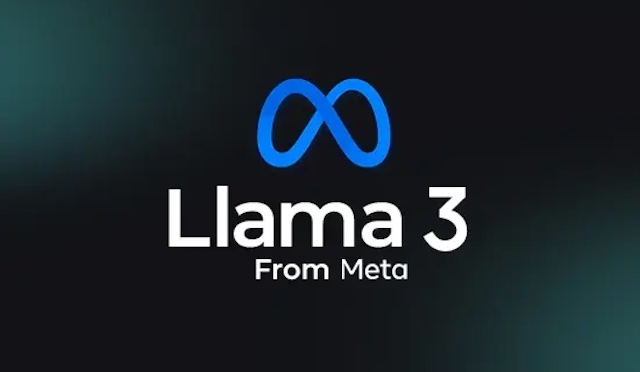By ATS Staff - December 9th, 2020
Artificial Intelligence LLMs Machine Learning
In recent years, the field of artificial intelligence has seen rapid advancements, particularly with the development of large language models (LLMs). LLaMA 3, the latest iteration of Meta’s "Large Language Model for AI Assistance" series, is setting new standards in natural language processing (NLP) capabilities. It follows in the footsteps of its predecessors, LLaMA and LLaMA 2, which have been praised for their efficiency, scalability, and open-source accessibility. With LLaMA 3, Meta aims to further democratize access to cutting-edge AI technology while addressing some of the challenges faced by earlier models.
What is LLaMA 3?
LLaMA 3 is a state-of-the-art transformer-based language model designed to generate human-like text, process vast amounts of data, and assist in various tasks, from answering questions to generating creative content. It builds on the core architecture of previous versions but introduces several key improvements in areas such as performance, safety, and versatility.
LLaMA 3 stands out for its balance of computational efficiency and model size. Unlike many other models, which require massive computational resources, LLaMA 3 has been designed to operate effectively even with fewer parameters, making it accessible for researchers and developers who may not have access to large-scale computing infrastructure.
Key Features and Innovations
- Improved Model Performance:
LLaMA 3 boasts substantial improvements in both training speed and accuracy. This is achieved through better optimization techniques and a more efficient architecture that allows the model to learn from data faster while reducing the number of parameters needed for the same level of performance. - Multimodal Capabilities:
One of the standout features of LLaMA 3 is its enhanced ability to handle multimodal inputs. It can process not just text but also images and potentially other forms of media in future iterations. This capability opens up new possibilities for applications that involve image captions, text-to-image generation, and deeper interaction between different types of data. - Enhanced Safety and Ethical Considerations:
With growing concerns about bias, misinformation, and misuse of AI-generated content, LLaMA 3 introduces more robust safety mechanisms. Meta has invested heavily in fine-tuning the model to mitigate harmful outputs, reduce bias, and promote fairness. This includes a more extensive and diverse dataset for training, as well as feedback loops to monitor and refine the model's responses over time. - Efficiency and Scalability:
One of the primary goals of LLaMA 3 is to make powerful AI accessible to a wider audience. While many large language models require significant computational resources to run, LLaMA 3 has been optimized for efficiency, meaning it can be deployed on smaller hardware setups without compromising performance. This scalability allows developers, researchers, and organizations to leverage cutting-edge NLP without the need for specialized, high-end infrastructure. - Open-Source Accessibility:
A key aspect of Meta’s strategy with the LLaMA series is its commitment to open science and accessibility. LLaMA 3, like its predecessors, is open-source, allowing researchers, developers, and enthusiasts to access and modify the model for their own use cases. This openness fosters innovation and collaboration within the AI community, accelerating advancements in the field.
Use Cases of LLaMA 3
The potential applications of LLaMA 3 are vast, spanning multiple industries and disciplines:
- Healthcare:
In the medical field, LLaMA 3 can assist in analyzing patient records, providing clinical recommendations, and even helping with the research and development of new treatments by processing large amounts of medical literature. - Education:
LLaMA 3 can be used as a virtual tutor, helping students with homework, answering questions, and providing personalized learning experiences based on individual needs. - Business and Customer Support:
Companies can use LLaMA 3 to automate customer service, process large datasets, and provide real-time business insights, helping to optimize operations and enhance customer experiences. - Creative Industries:
Writers, artists, and content creators can use LLaMA 3 to generate ideas, write articles, create stories, or even produce art by combining text with images in multimodal applications. - Research and Data Analysis:
LLaMA 3’s ability to sift through massive amounts of data and generate coherent summaries or detailed analyses makes it a powerful tool for researchers across various fields, from academia to industry.
Challenges and Future Directions
While LLaMA 3 is undoubtedly a significant leap forward, there are still challenges that the AI community must address. These include ongoing concerns about the ethical use of AI, the potential for misinformation, and ensuring that AI systems are transparent and accountable. Meta’s approach to addressing these issues has been proactive, but it remains a continuous area of research and development.
Looking ahead, future iterations of the LLaMA series may focus on enhancing the model's interpretability, further improving the alignment between the model’s outputs and human intentions, and exploring even more efficient architectures. As AI continues to evolve, LLaMA 3 represents an exciting step toward making AI more intelligent, accessible, and responsible.
Conclusion
LLaMA 3 is poised to revolutionize the way we interact with AI, offering unprecedented capabilities in natural language understanding and generation while addressing key ethical and practical challenges. With its open-source nature, multimodal abilities, and focus on safety, LLaMA 3 stands as a powerful tool for researchers, businesses, and creators, driving innovation in the field of AI and beyond. As we continue to explore its potential, it is clear that LLaMA 3 is not just another iteration—it is a glimpse into the future of AI.
Popular Categories
Agile 2 Android 2 Artificial Intelligence 50 Blockchain 2 Cloud Storage 3 Code Editors 2 Computer Languages 12 Cybersecurity 8 Data Science 15 Database 5 Digital Marketing 3 Ecommerce 3 Email Server 2 Finance 2 Google 6 HTML-CSS 2 Industries 6 Infrastructure 3 iOS 3 Javascript 5 Latest Technologies 42 Linux 5 LLMs 11 Machine Learning 32 Mobile 3 MySQL 2 Operating Systems 3 PHP 2 Project Management 3 Python Programming 26 SEO - AEO 5 Software Development 44 Software Testing 3 Web Server 7 Work Ethics 2